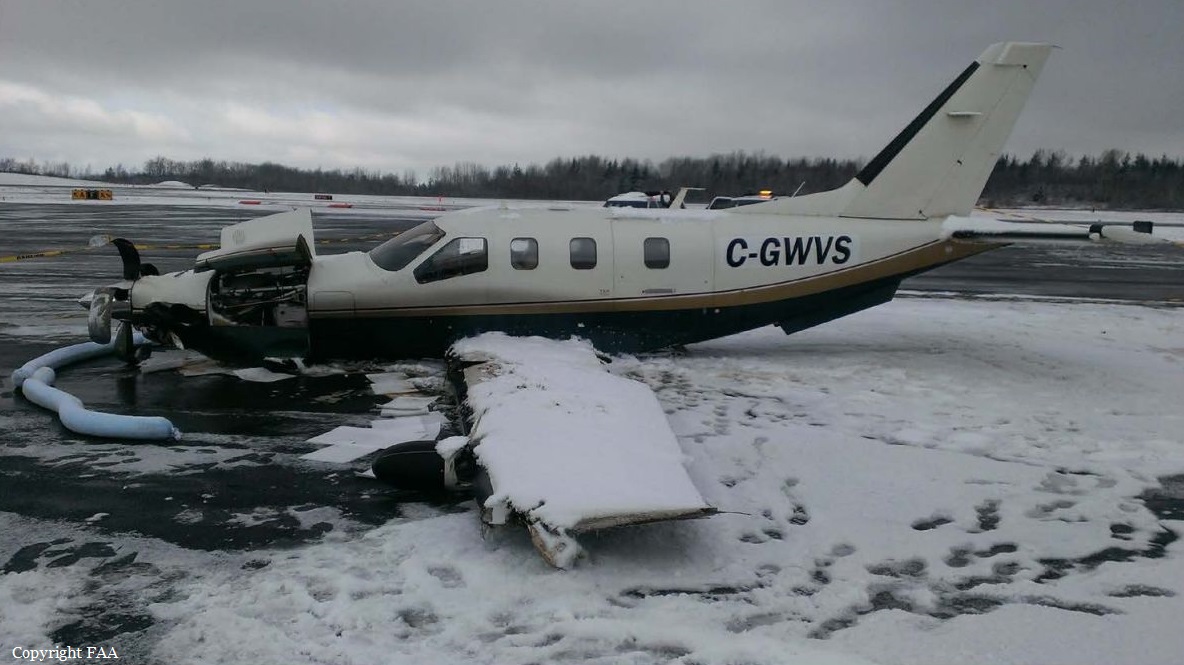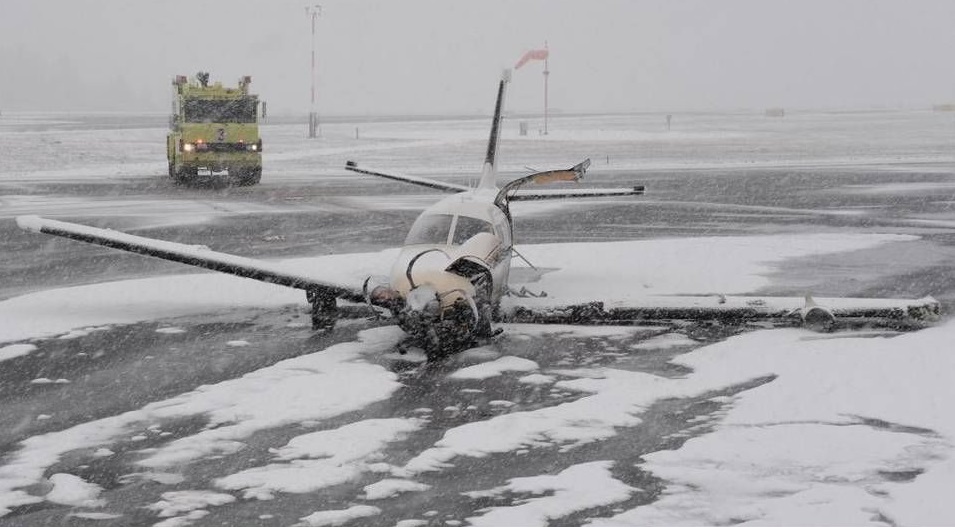Country
Crash of a Socata TBM-700 in Evanston: 2 killed
Date & Time:
Feb 18, 2018 at 1505 LT
Registration:
N700VX
Survivors:
No
Schedule:
Tulsa – Evanston
MSN:
118
YOM:
1997
Crew on board:
1
Crew fatalities:
Pax on board:
1
Pax fatalities:
Other fatalities:
Total fatalities:
2
Captain / Total hours on type:
100.00
Aircraft flight hours:
3966
Circumstances:
The commercial pilot was conducting an instrument approach following a 3.5-hour cross-country instrument flight rules (IFR) flight in a single-engine turboprop airplane. About 1.6 miles from the runway threshold, the airplane began a climb consistent with the published missed approach procedure; however, rather than completing the slight left climbing turn toward the designated holding point, the airplane continued in an approximate 270° left turn, during which the airplane's altitude varied, before entering a descending right turn and impacting terrain. Tree and ground impact signatures were consistent with a 60° nose-low attitude at the time of impact. No distress calls were received or recorded from the accident flight. A postimpact fire consumed a majority of the cockpit and fuselage. Weather information for the time of the accident revealed that the pilot was operating in IFR to low IFR conditions with gusting surface winds, light to heavy snow, mist, cloud ceilings between 700 and 1,400 ft above ground level with clouds extending through 18,500 ft, and the potential for low-level wind shear and clear air turbulence. The area of the accident site was under AIRMETs for IFR conditions, mountain obscuration, moderate icing below 20,000 ft, and moderate turbulence below 18,000 ft. In addition, a winter storm warning was issued about 6 hours before the flight departed. Although the pilot received a weather briefing about 17 hours before the accident, there was no indication that he obtained updated weather information before departure or during the accident flight. Examination of the airframe and engine did not reveal any preimpact anomalies that would have precluded normal operation; however, the extent of the fire damage precluded examination of the avionics system. The airplane was equipped with standby flight instruments. An acquaintance of the pilot reported that the pilot had experienced an avionics malfunction several months before the accident during which the airplane's flight display went blank while flying an instrument approach. During that occurrence, the pilot used ForeFlight on his iPad to maneuver back to the northeast and fly the approach again using his own navigation. During the accident flight, the airplane appeared to go missed approach, but rather than fly the published missed approach procedure, the airplane also turned left towards to northeast. However, it could not be determined if the pilot's actions were an attempt to fly the approach using his own navigation or if he was experiencing spatial disorientation. The restricted visibility and turbulence present at the time of the accident provided conditions conducive to the development of spatial disorientation. Additionally, the airplane's turning flight track and steep descent profile are consistent with the known effects of spatial disorientation.
Probable cause:
The pilot's loss of control due to spatial disorientation.
Final Report:
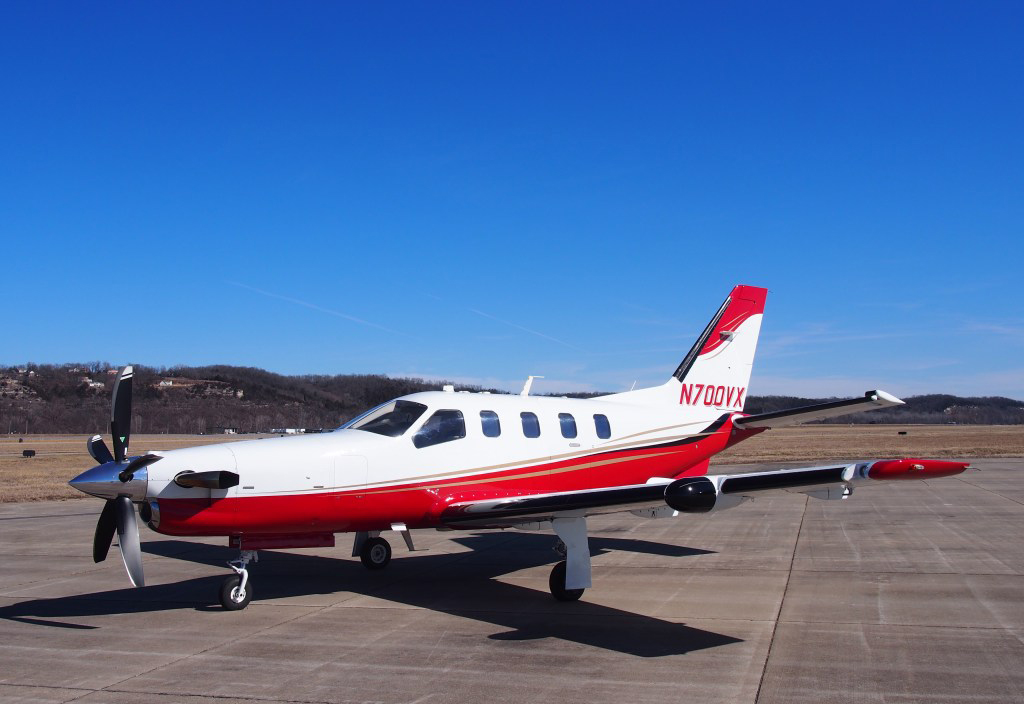
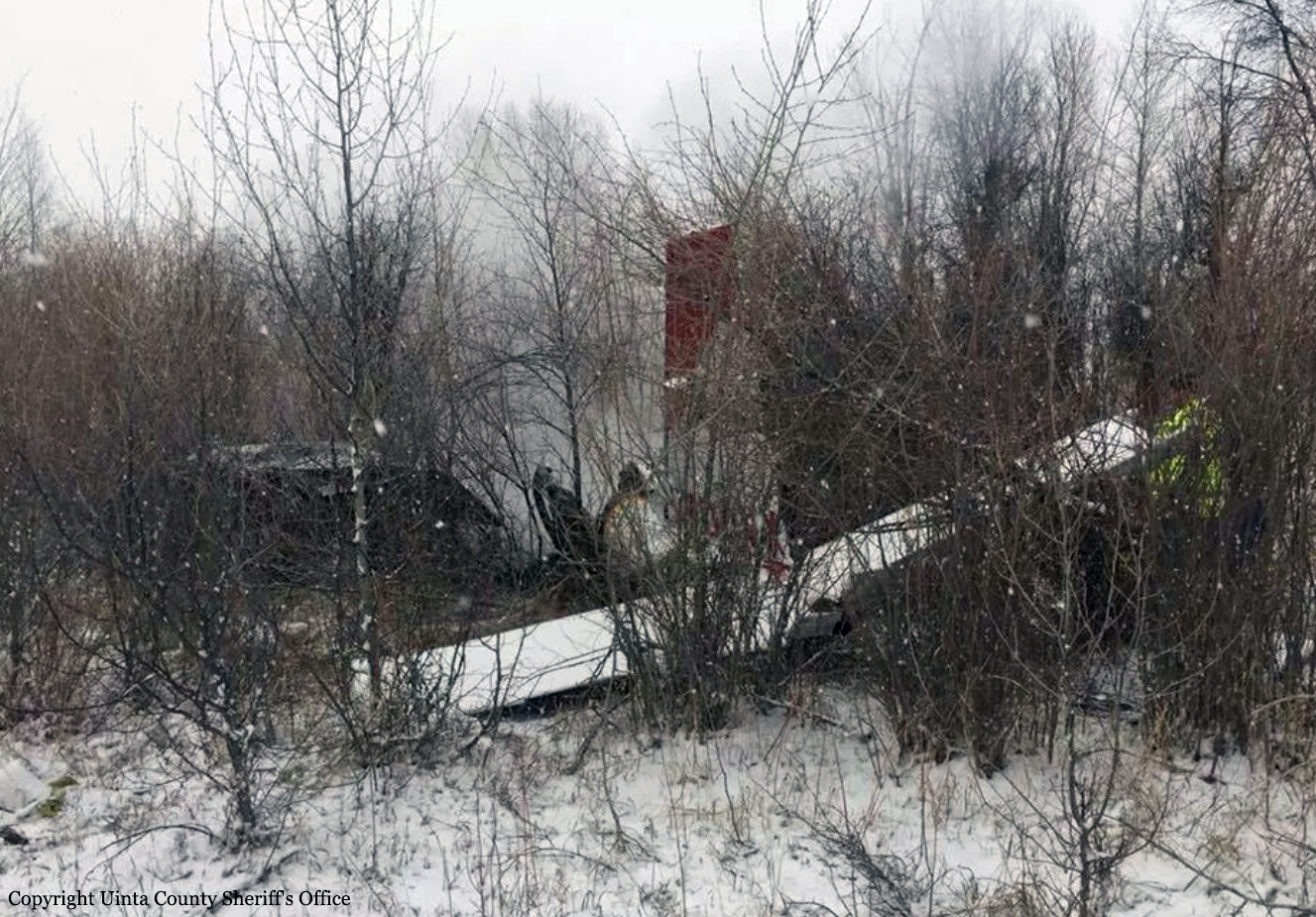
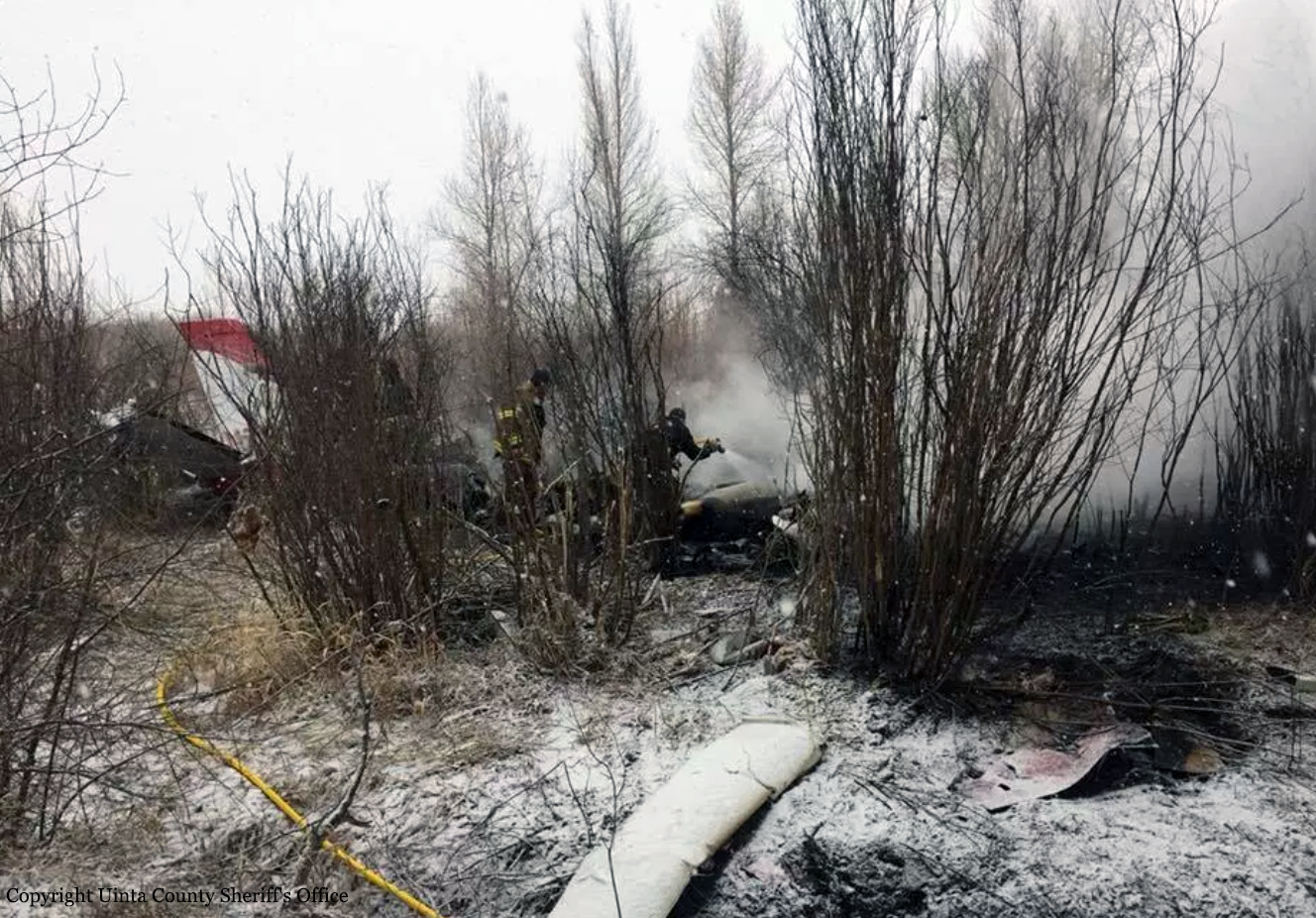
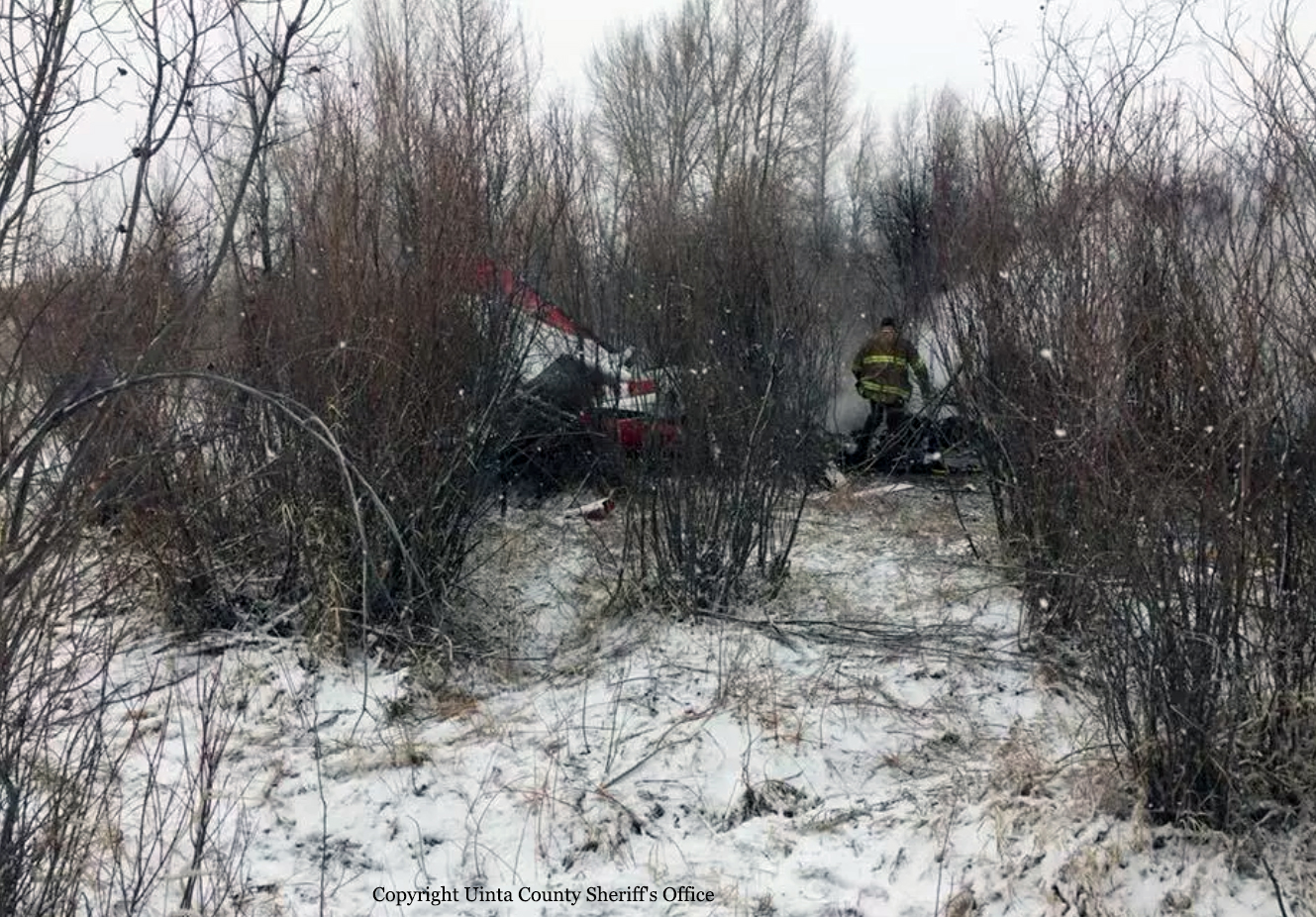

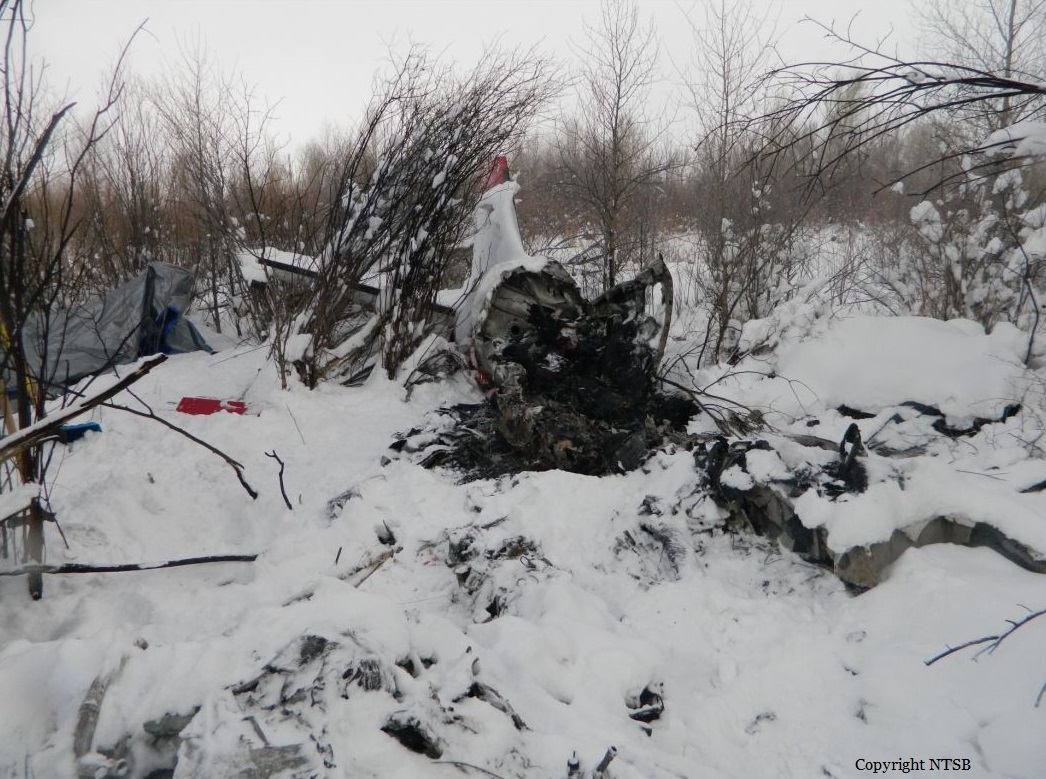
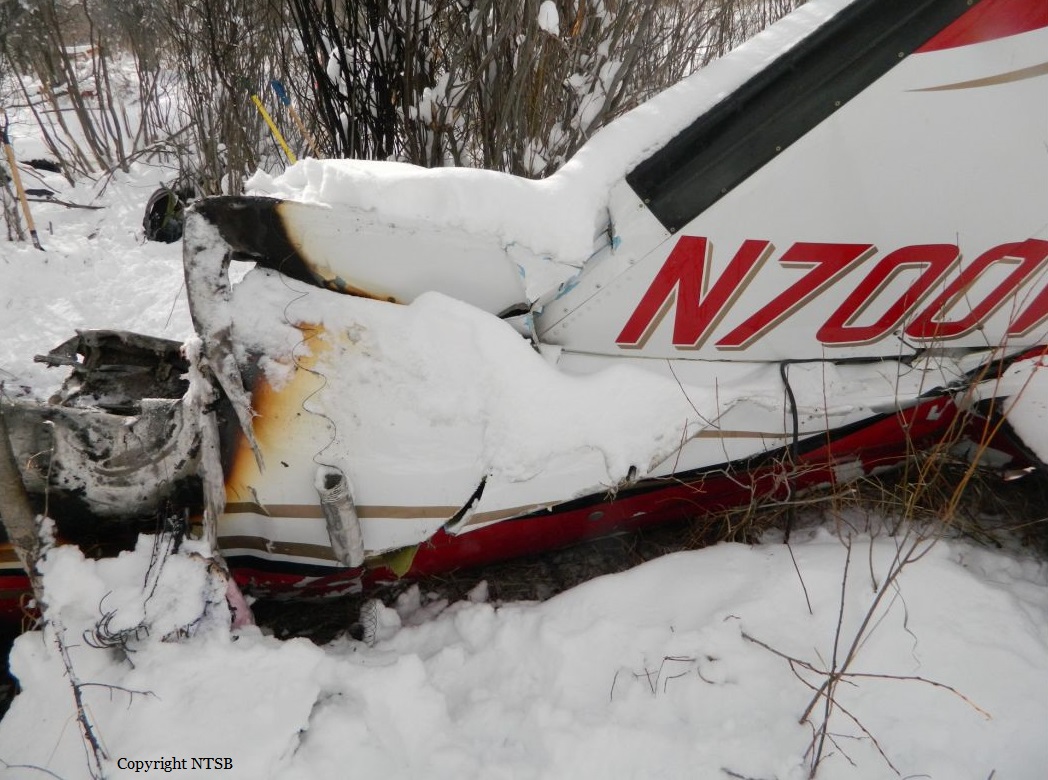
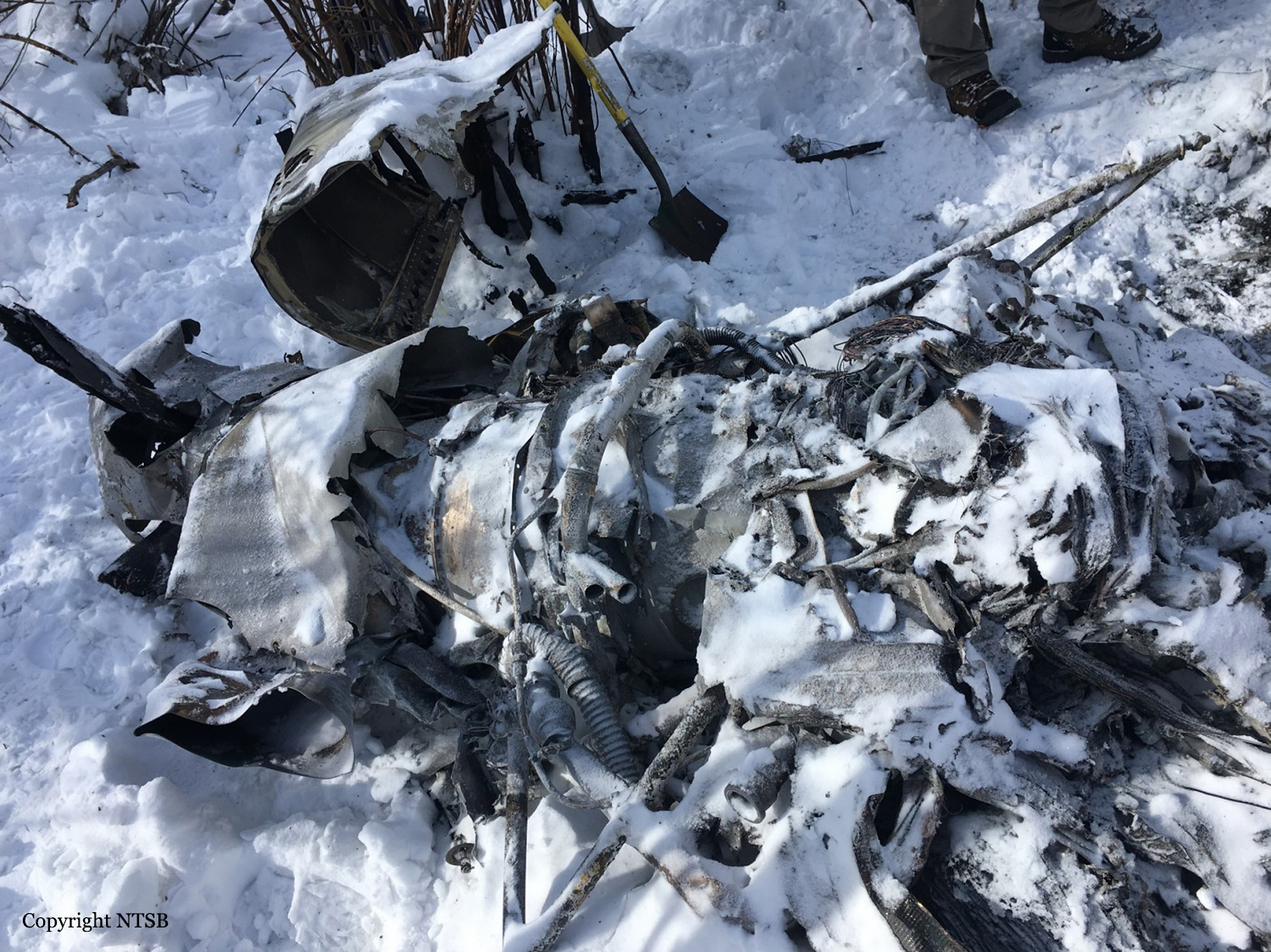
Crash of a Socata TBM-700 in Yamazoe: 2 killed
Date & Time:
Aug 14, 2017 at 1215 LT
Registration:
N702AV
Survivors:
No
Schedule:
Yao – Fukushima
MSN:
182
YOM:
2001
Crew on board:
1
Crew fatalities:
Pax on board:
1
Pax fatalities:
Other fatalities:
Total fatalities:
2
Captain / Total hours on type:
7.00
Aircraft flight hours:
2094
Circumstances:
The single engine aircraft departed Yao Airport at 1157LT on a leisure flight to Fukushima, carrying one passenger and one pilot. Few minutes later, the pilot reported an unexpected situation to ATC and was cleared to return to Yao. At an altitude of 17,200 feet and a speed of 150 knots, the aircraft entered an uncontrolled descent, partially disintegrated in the air and eventually crashed in a hilly and wooded terrain near the village of Yamazoe, bursting into flames. Both occupants were killed.
Probable cause:
In the accident, it is highly probable that the Aircraft lost control during flight, nose-dived while turning, and disintegrated in mid-air, resulting in the crash. It is somewhat likely that the Aircraft lost control during flight, because the captain did not have pilot skills and knowledge necessary for the operation of the Aircraft, and was not able to perform proper flight operations.
Final Report:
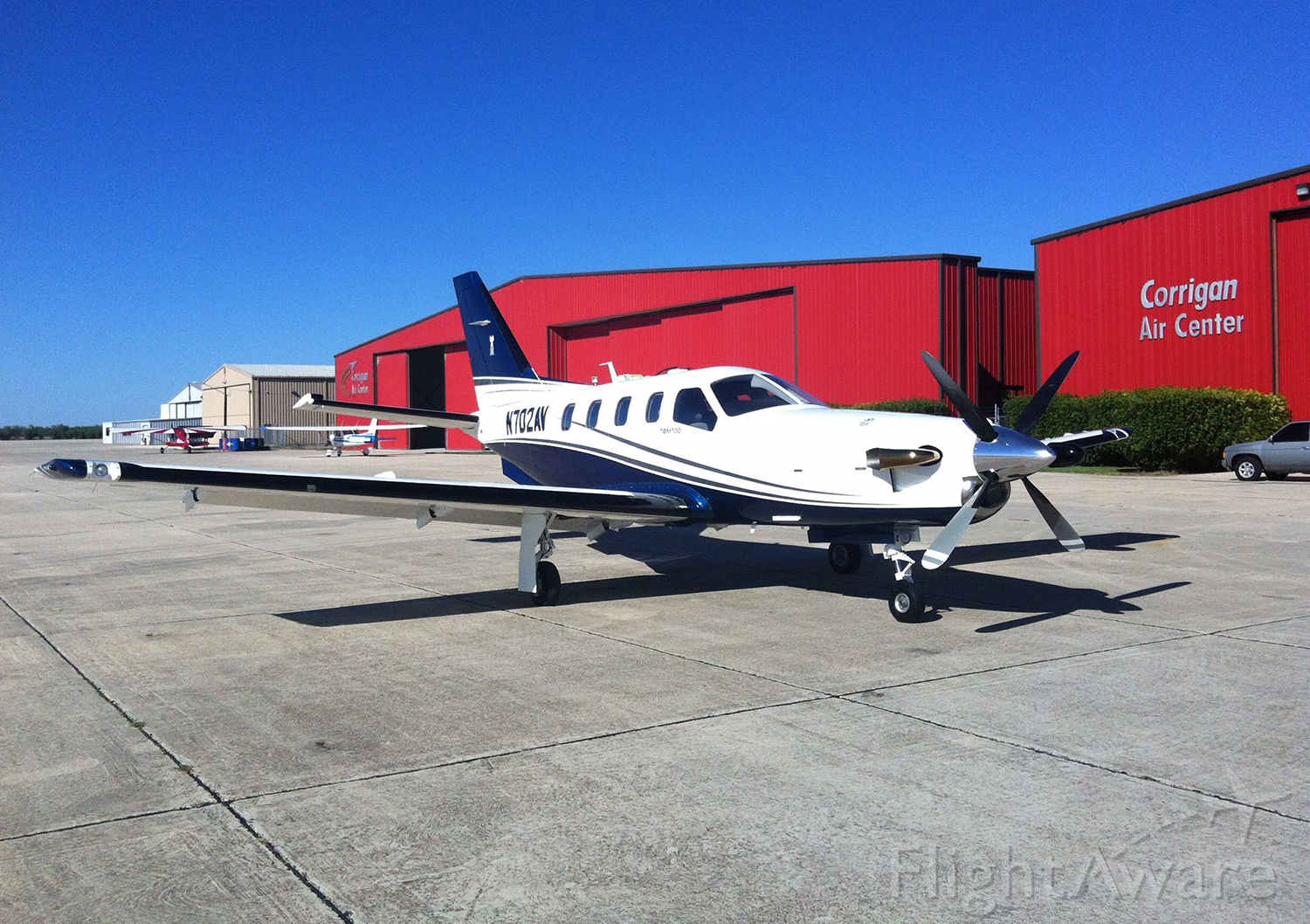
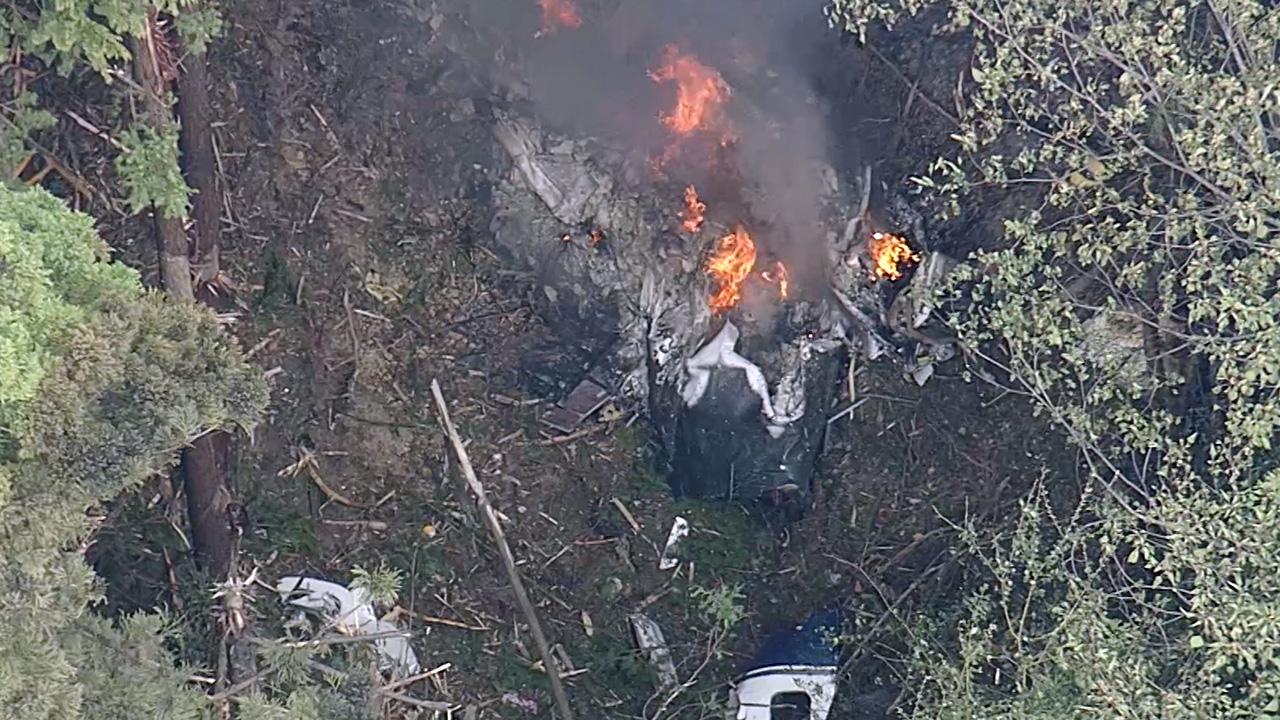
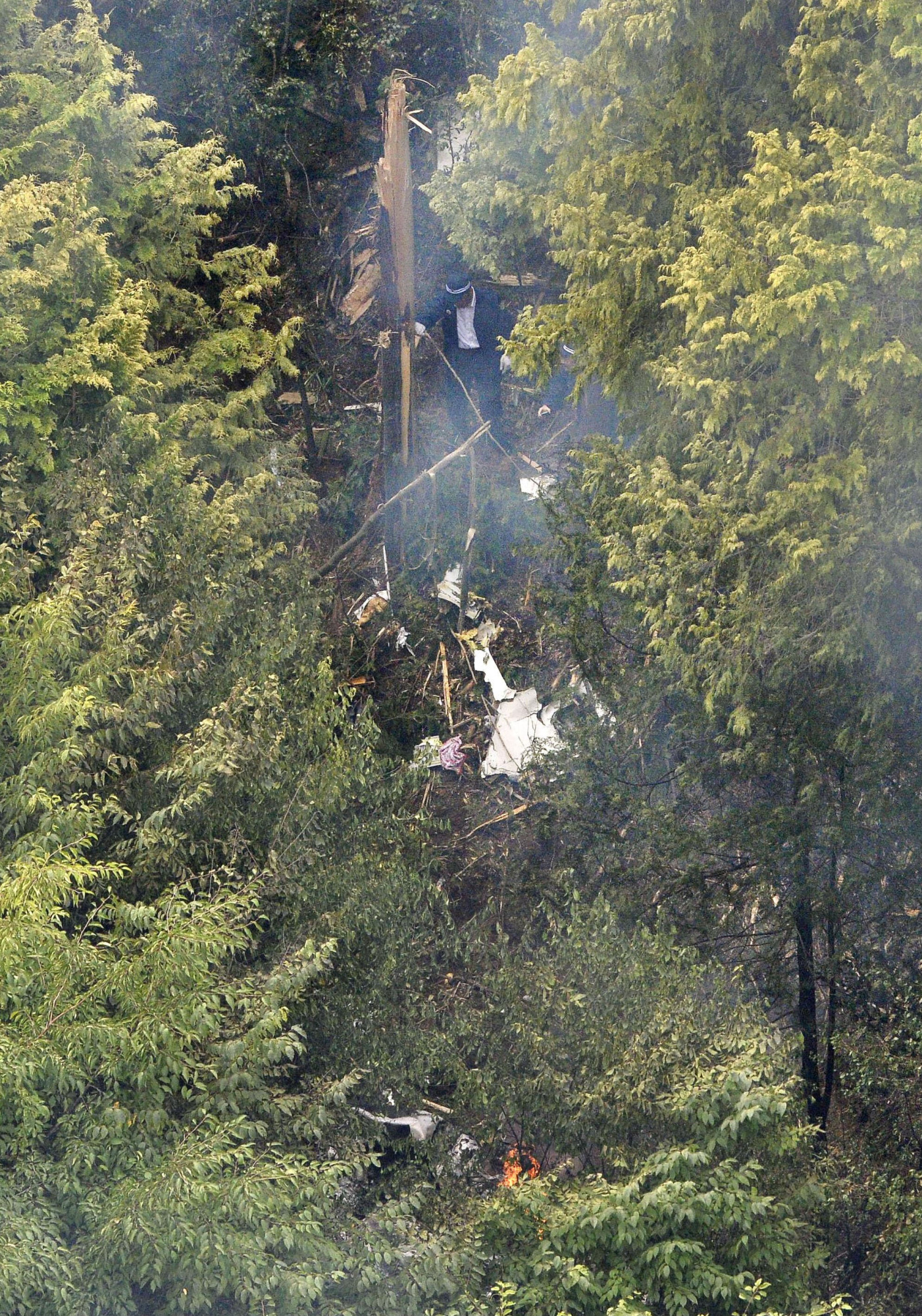
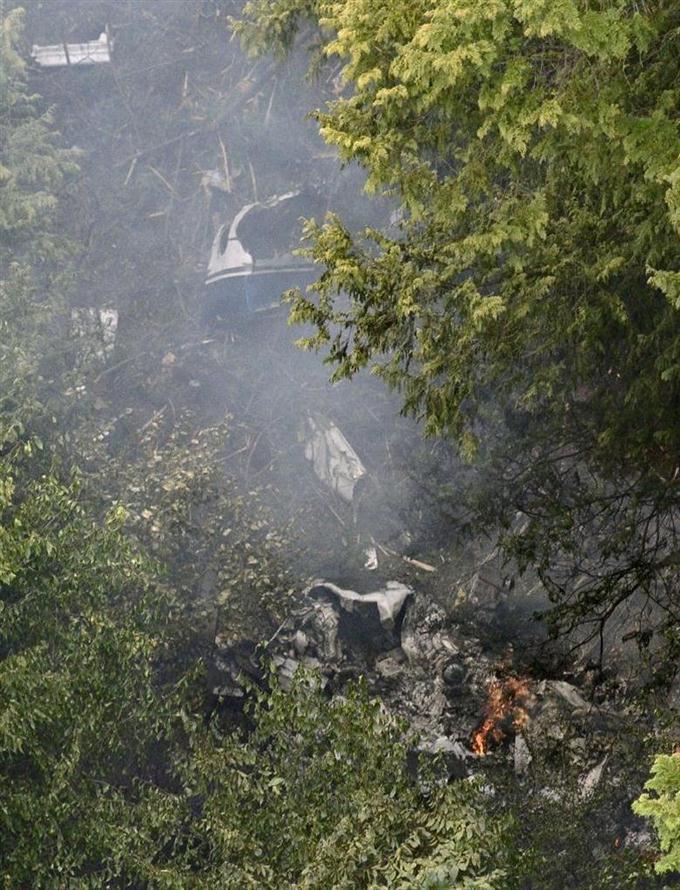

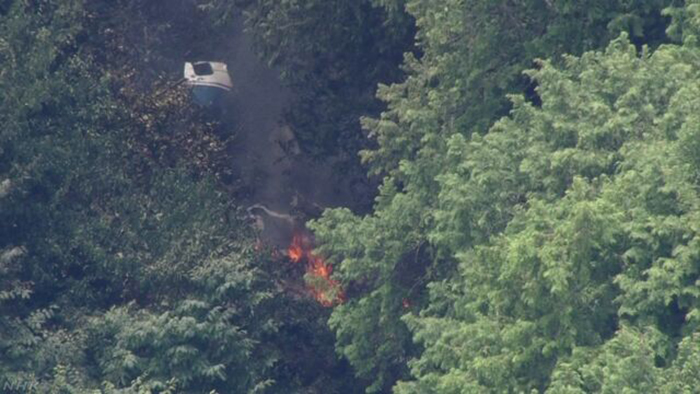
Crash of a Socata TBM-700A in Bellingham
Date & Time:
Feb 27, 2017 at 1220 LT
Registration:
C-GWVS
Survivors:
Yes
Schedule:
Bellingham – Pierce County
MSN:
210
YOM:
2002
Crew on board:
1
Crew fatalities:
Pax on board:
0
Pax fatalities:
Other fatalities:
Total fatalities:
0
Captain / Total hours on type:
381.00
Aircraft flight hours:
1962
Circumstances:
The pilot reported that, during the preflight, it was snowing, and he wiped the snow that had accumulated on the wings off "as best as [he] could." He added that, while taxiing to the runway, "snow was falling heavily," and he observed "light accumulation of wet snow" on the wings. During the takeoff roll, he observed the snow "sloughing off" the wings as the airspeed increased. Subsequently, during the climb to about 150 ft above the ground, the airplane yawed to the left, and he attempted to recover using right aileron. He reported that he "could see a stall forming," so he lowered the nose and reduced power to idle. The airplane impacted the general aviation ramp in a left-wing-down attitude and slid 500 to 600 ft. The pilot reported on the National Transportation Safety Board Aircraft Accident/ Incident Report 6120.1 form that the airplane stalled, and he recommended "better deicing" before takeoff. The airplane sustained substantial damage to the fuselage and left wing. The pilot reported that there were no preaccident mechanical failures or malfunctions with the airframe or engine that would have precluded normal operation. A review of recorded data from the automated weather observation station located on the airport revealed that, about 27 minutes before the accident, the wind was 010° at 8 knots, 1/2-mile visibility, moderate snow, freezing fog, and sky condition broken at 500 ft above ground level (agl) and overcast at 1,500 ft agl. The airplane departed from runway 16. The Federal Aviation Administration (FAA) Aeronautical Information Manual stated, in part: "The presence of aircraft airframe icing during takeoff, typically caused by improper or no deicing of the aircraft being accomplished prior to flight has contributed to many recent accidents in turbine aircraft." The manual further stated, "Ensure that your aircraft's lift-generating surfaces are COMPLETELY free of contamination before flight through a tactile (hands on) check of the critical surfaces when feasible. Even when otherwise permitted, operators should avoid smooth or polished frost on lift-generating surfaces as an acceptable preflight condition." FAA Advisory Circular, AC 135-17, stated in part: "Test data indicate that ice, snow, or frost formations having thickness and surface roughness similar to medium or course sandpaper on the leading edge and upper surfaces of a wing can reduce wing lift by as much as 30 percent and increase drag by 40 percent." Included in the public docket for this report is a copy of a service bulletin from the airplane manufacturer, which describes deicing and anti-icing ground procedures. It stated, in part: During conditions conducive to aeroplane icing during ground operations, take-off shall not be attempted when ice, snow, slush or frost is present or adhering to the wings, propellers, control surfaces, engine inlets or other critical surfaces. This is known as the "Clean Aircraft Concept". Any deposit of ice, snow or frost on the external surfaces may drastically affect its performance due to reduced aerodynamic lift and increased drag resulting from the disturbed airflow.
Probable cause:
The pilot's failure to properly deice the airplane before takeoff, which resulted in an aerodynamic stall during the initial climb.
Final Report:
